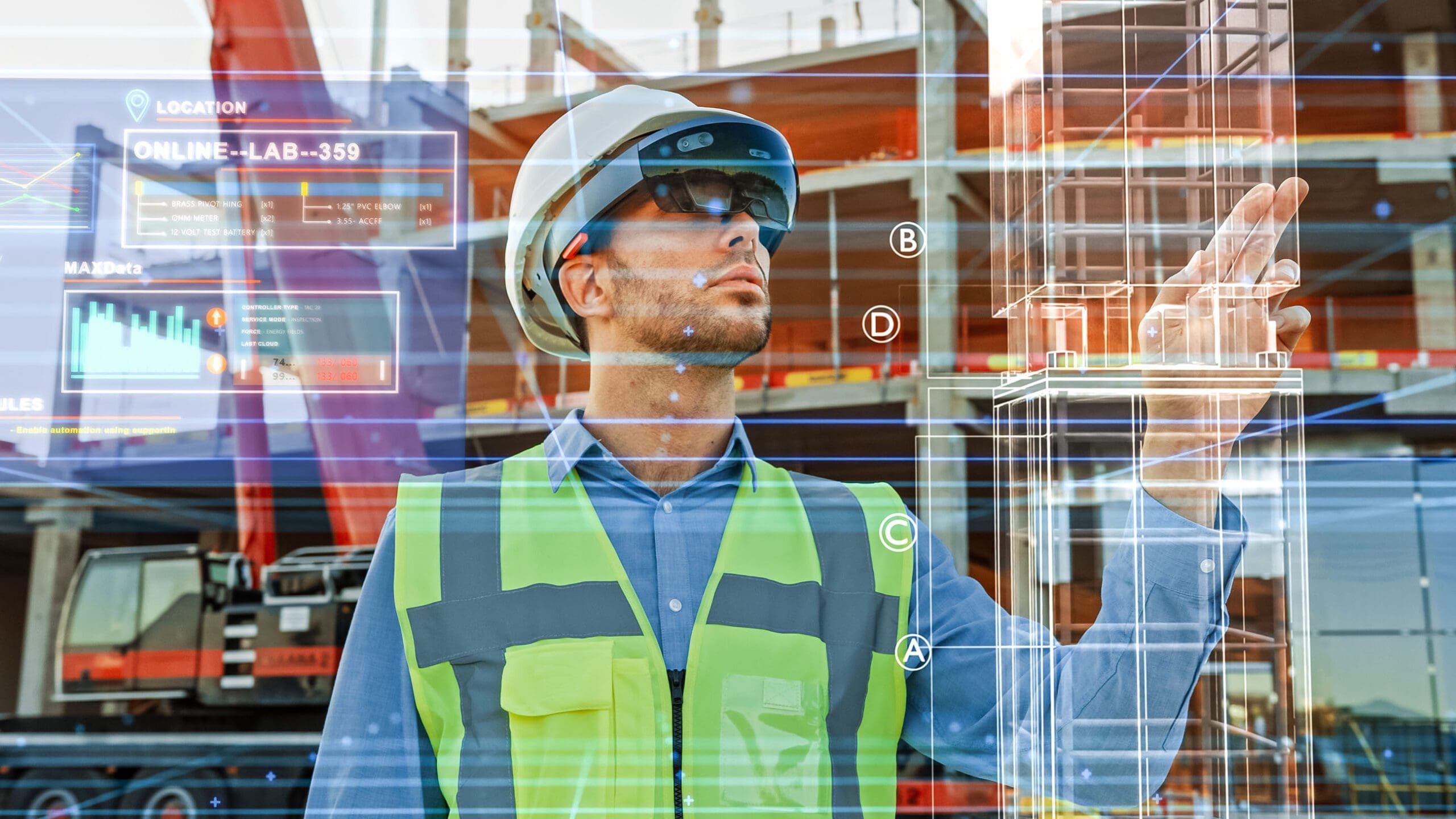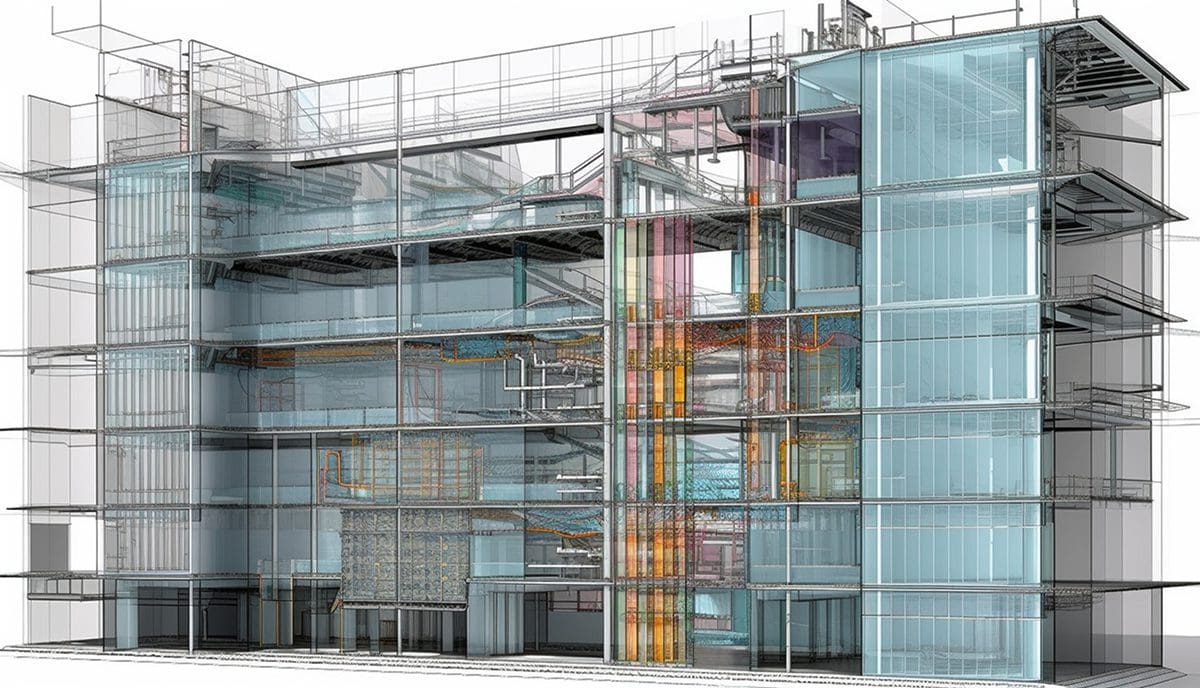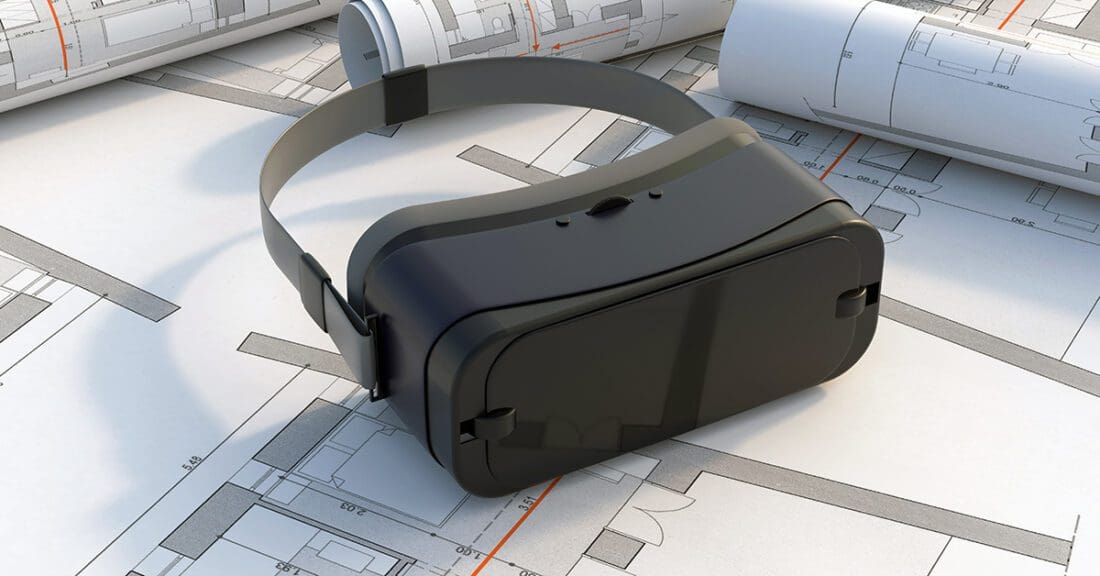Virtual/Augmented Reality
How Virtual and Augmented Reality Are Revolutionizing Commercial Construction
For some people, the term “virtual reality” conjures up images of someone wearing a headset and battling imaginary dragons—or playing lead guitar in an imaginary rock band. But it’s actually much more than that. Virtual reality (VR) and its cousin, augmented reality (AR), have revolutionized practices in important fields such as medicine, education, and military training, and they are also changing what is possible in the fields of architecture, and construction.
AR and VR contribute to the construction fields at nearly every stage of the process, from delivering a higher level of visualization in the planning phases, to helping maintenance workers better understand the location of building systems.
Before taking a closer look at these benefits, here’s a quick VR/AR primer.

Virtual reality refers to a completely immersive experience in which the user enters an entirely computer-generated world. This requires the use of a head-mounted device (HMD) and involves no interaction with the actual world.

Augmented reality offers a less-immersive experience, but one in which computer-generated objects can be superimposed on real-world landscapes and manipulated to create various effects. Usually, no special equipment is required, although AR glasses (head-mounted devices for AR) can be used for some applications. Most AR can be accessed on a laptop computer, tablet, or even a cellphone, making it extremely useful and versatile.

Mixed reality (MR) refers to an experience somewhere between the two described above. Its parameters are necessarily vague, since the technology has proliferated beyond anyone’s ability to create fixed definitions.

Extended reality (XR) is the umbrella term encompassing all the above.
Virtual Reality vs. Augmented Reality
VR is now used extensively to provide training for physicians, pilots, military service members and other professions that require high skill levels. These fields all involve life-and-death risks. When the stakes are this high, the chance to learn in a virtual environment is invaluable. Compared to real-world training in the field, it’s low risk and low-cost.
On the other hand, VR can be expensive to create and to implement. For smaller scale projects, the costs can outweigh the benefits. And the necessity of using special headgear makes it impractical for some purposes. Meanwhile, augmented reality is widely accessible, relatively cheap, and easier to create. That’s why it’s become so useful in so many industries—including the building trades.

Augmented Reality Hits The Construction Industry
Visualization As A Support For Design And Client Engagement
Architects and builders have always relied on visual representations to convey their designs before beginning construction. It’s important for the investors, project owners, builders, and others to be able to see what they’re participating in. But today’s technology offers much more than the traditional architectural drawings or small-scale models.
The potential uses of AR for client engagement in architecture and construction are extensive. Showing clients the amazing possibilities via 3D images on a laptop can be the key to explaining a concept, conveying an idea, and making a sale. They can also facilitate the collaborative process – with the move of a mouse, a property owner can see their desired modifications appear immediately on the screen.
Meanwhile, an AR rendering typically includes embedded data on all the components and systems in a building. So, a user can see not only the external structure, but the framing, plumbing, electrical circuits, HVAC ducting, and more. They can also change and manipulate these elements to correct problems and explore various alternatives. The virtual structure can be moved, turned around, pivoted, shrunk, or expanded. It can be taken apart layer by layer to reveal the various systems individually. Users can see the structure depicted in different colors or with different materials. At least one AR app allows users to adjust opacity, so they can “see through” the image to view its various components.

Visualization For Collaboration Between Architects, Engineers And Contractors
As valuable as these capabilities are in impressing potential stakeholders, they’re even more useful for those working on the technical side. Designers, architects, engineers, project managers and subcontractors can all view comprehensive, accurate renderings of the structure and weigh in with their changes before building begins. AR makes collaboration between these participants much easier and more efficient, and can help save money over the course of the entire project.
How Can AR Improve Construction Safety Planning?
On a construction project, AR renderings can provide a valuable training tool. Before setting foot on the jobsite, workers can visualize what they’re building and gain a better understanding of what they need to do. On the jobsite, workers can use AR glasses to scan pre-placed QR tags to view an overlay of information including hazard alerts, material notes, and special instructions. They can also isolate potential danger zones, safety issues and other problems. In general, safety training scenarios can be conducted virtually, allowing for instruction without being exposed to any actual safety risks.
One benefit common to all these capabilities is the potential to reduce expenses. It costs time and money to travel to a construction site and to organize onsite safety training. When an entire team has to make that trip, the expense is multiplied. By contrast, if they can address issues virtually, the savings can be huge.
Ongoing Building Management
The benefits of augmented reality continue after a building is constructed. Technicians can troubleshoot problems and maintenance issues by consulting the AR models, before setting foot on the site. Then when they do arrive, they can attack their tasks with precision and confidence–again, saving money. When it comes to large buildings and campuses, extensive AR models that detail the exact location of various systems can be invaluable. They can help facility managers train new team members, help with record keeping and be useful in pinpointing the location of operational equipment and building management technology.
With all these benefits, it’s clear that augmented reality is the future for commercial construction. It’s also the here-and-now.


